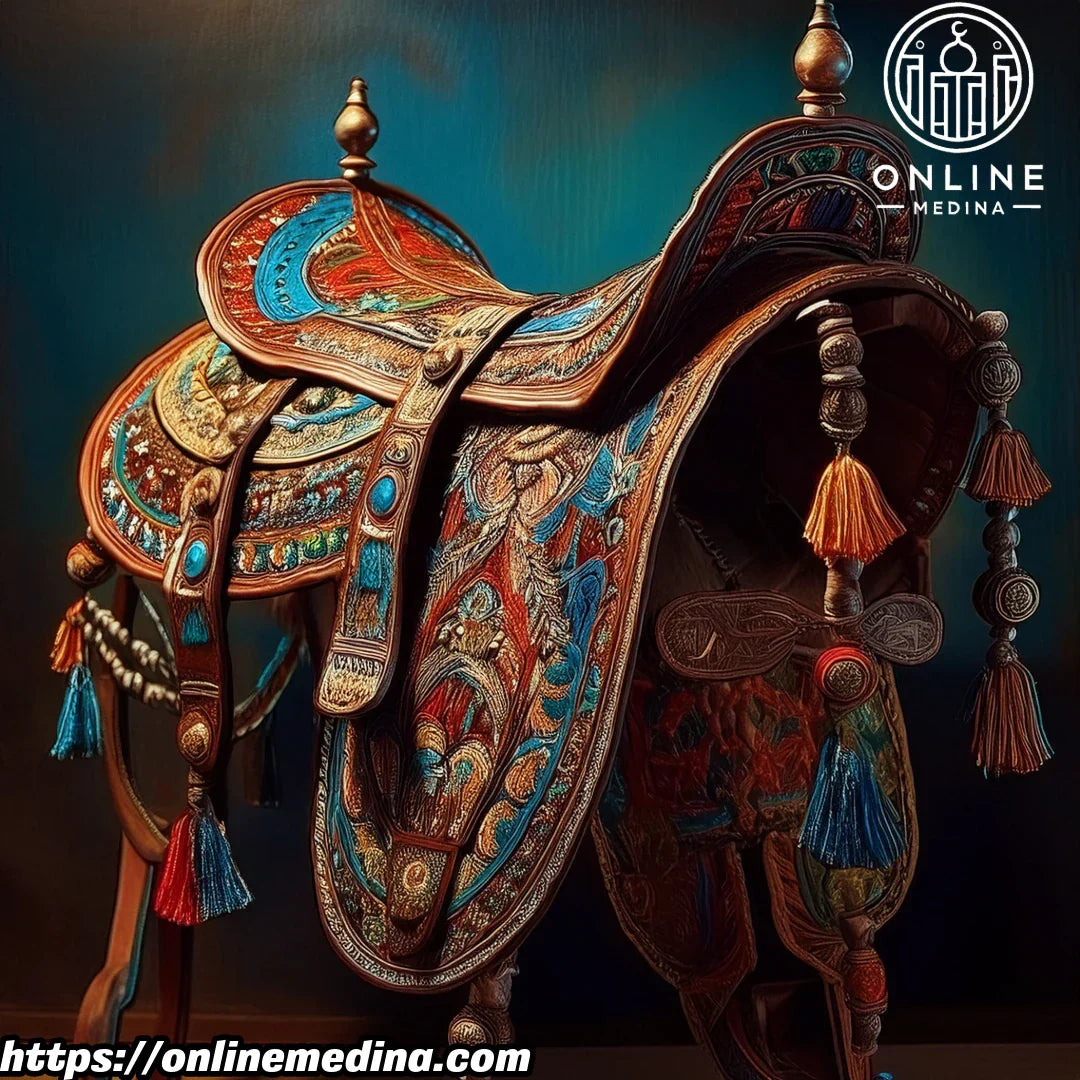
🎬 EPISODE 15: Moroccan saddlery
EPISODE 15. For centuries, Morocco has crafted exceptional equestrian craftsmanship. Blending tradition and prestige, Moroccan saddlery embodies a unique expertise, closely linked to the country's history and the central place of the horse in Moroccan culture.

📜 Moroccan saddlery: a thousand-year-old equestrian art
The history of saddlery in Morocco dates back to the Berber dynasties of the Middle Ages (11th–15th centuries), particularly under the Almoravids and Almohads. The horse, a symbol of power and prestige, was essential to conquests and communications throughout the Moroccan Empire. Riders of the great dynasties wore richly decorated saddles inspired by Andalusian and Ottoman influences.
In the 16th century, under the Saadians, Moroccan saddlery reached its peak with the production of luxurious harnesses adorned with gold and silver embroidery. Later, under the reign of the Alaouites (17th century to today), Moroccan saddles became elements of social distinction, reflecting the rider’s status and tribal belonging. Even today, the Tbourida (fantasia) festivities bear witness to this prestigious heritage.

📜 Valuable expertise
Making a traditional Moroccan saddle is a long and meticulous process that requires the collaboration of several artisans:
- Saddle tree making: The tree, in cedar or orange wood, is hand-shaped and covered with goatskin for strength and flexibility.
- Padding: Wool or horsehair cushions provide optimal comfort for the rider and the horse.
- Leather and embroidery: The saddle is covered in finely crafted leather, sometimes decorated with gold or silver thread embroidery, especially in Fez and Marrakech.
- Accessories: Stirrups, bits and bridles in chiseled copper or damascened iron are made by skilled ironworkers.
📌 Each saddle may require 4 to 12 months of work and involve up to 17 different trades.

📜 The central place of the horse in Moroccan culture
For centuries, the horse has been at the heart of Moroccan traditions:
- Tbourida: A traditional equestrian performance practiced across Morocco, where riders in djellabas perform synchronized gunfire during spectacular charges.
- Horse breeding: Barb and Arab-Barb breeds, prized for endurance and elegance, often wear ornate saddles in celebrations.
- Diplomatic use: Moroccan sultans historically gifted horses with sumptuous saddles to foreign ambassadors as symbols of prestige.

📜 Challenges and transmission of know-how
Despite its prestige, traditional Moroccan saddlery faces several challenges:
- Loss of master saddlers: Few artisans still master the ancient techniques.
- Industrial competition: The rise of mass-produced, low-cost saddles threatens traditional workshops.
- Material scarcity: Access to high-quality leather and wood is increasingly limited due to environmental constraints.
📌 New initiatives promote transmission, with training programs for young artisans and heritage preservation efforts.

🎯 A commitment to saddlery craftsmanship
Online Medina supports the transmission of this heritage. We highlight the creations of Moroccan master saddlers through a unique selection.
Discover our exceptional pieces and help preserve an ancestral craft.
📌 In the next episode: discover the art of Moroccan interior design, where carved stucco, ornate wood and ironwork transform palaces and riads into masterpieces.
🐎 Craft and equestrian tradition: Visit Online Medina and our handmade horse gear.
